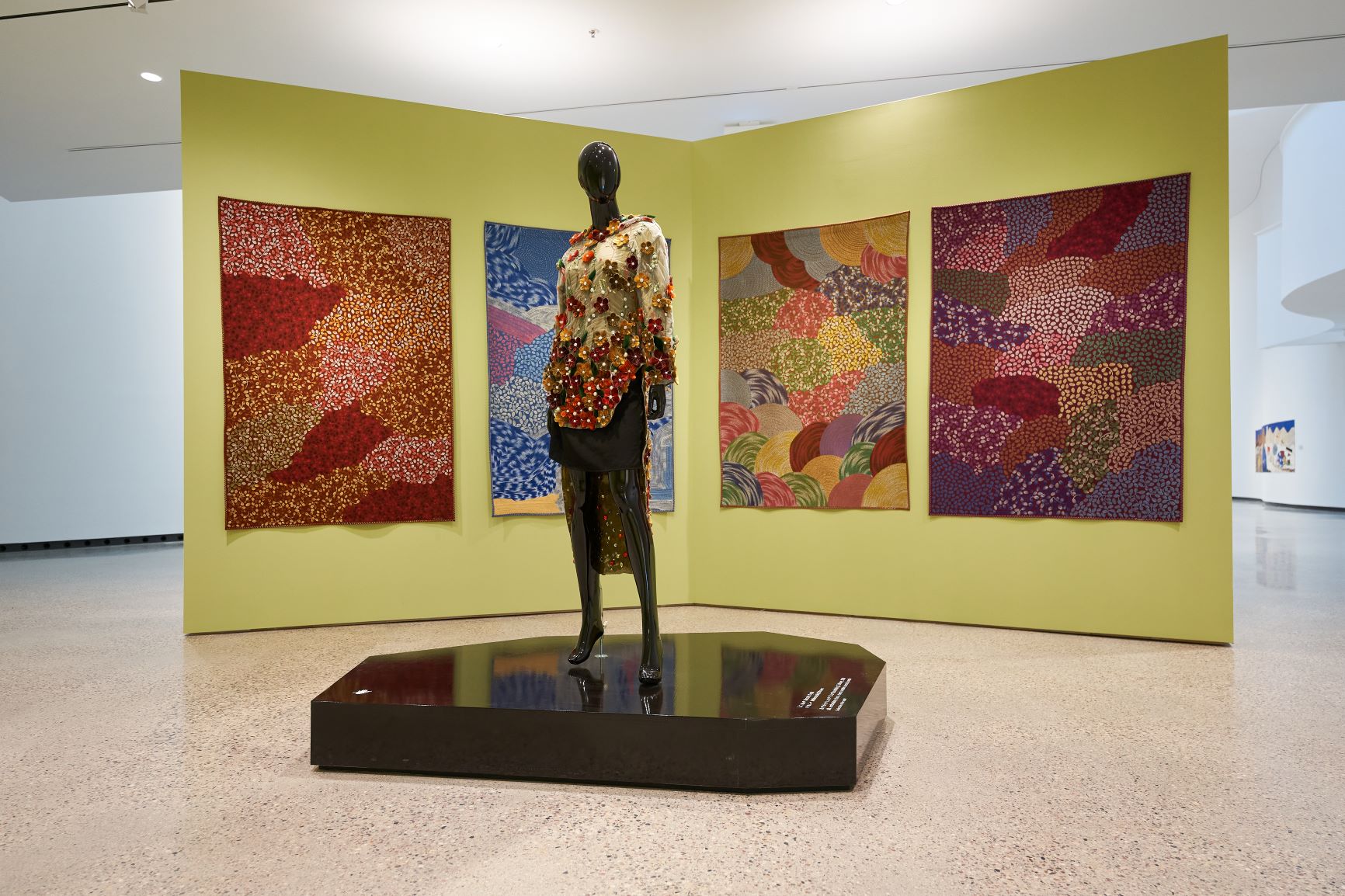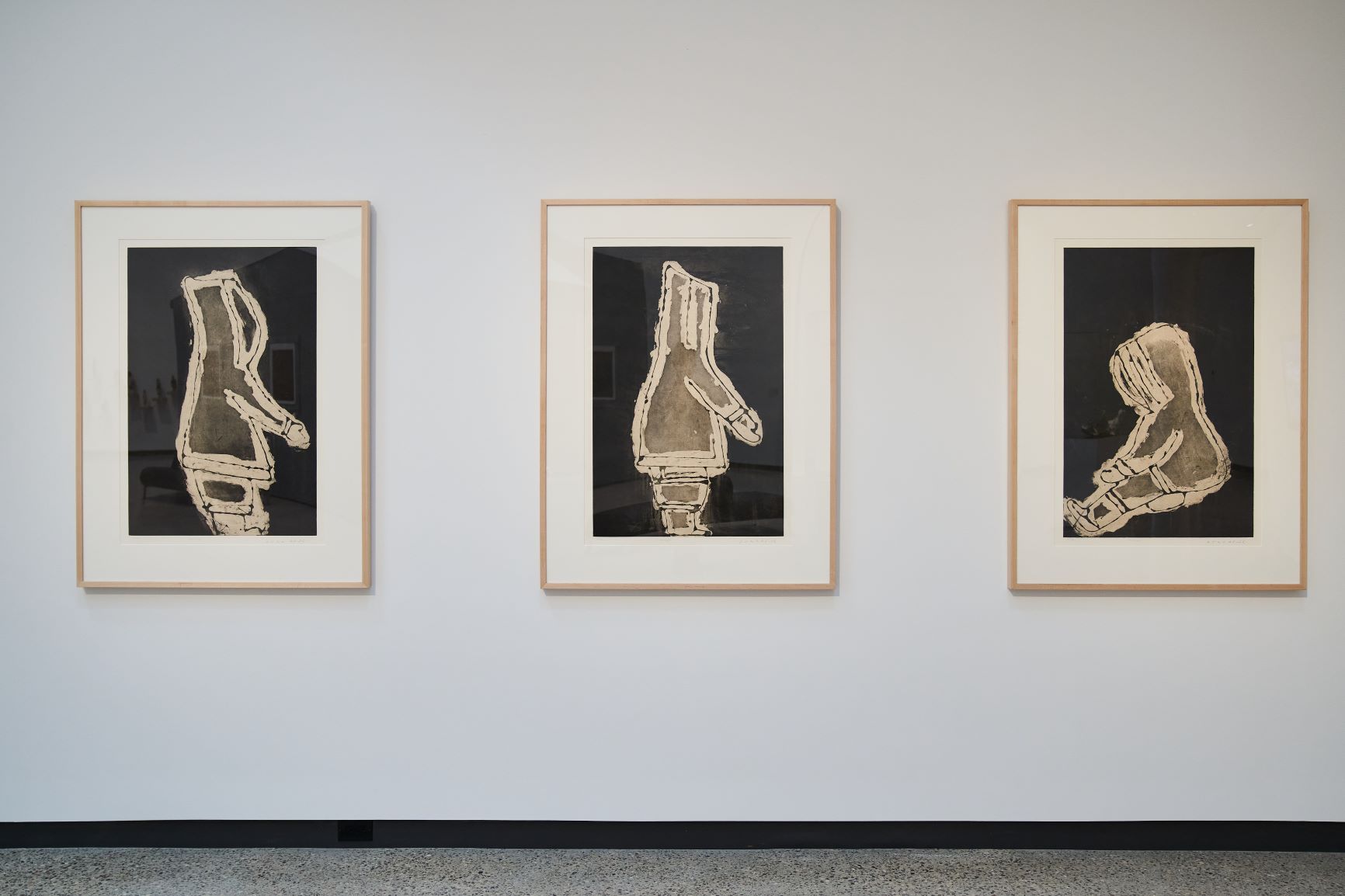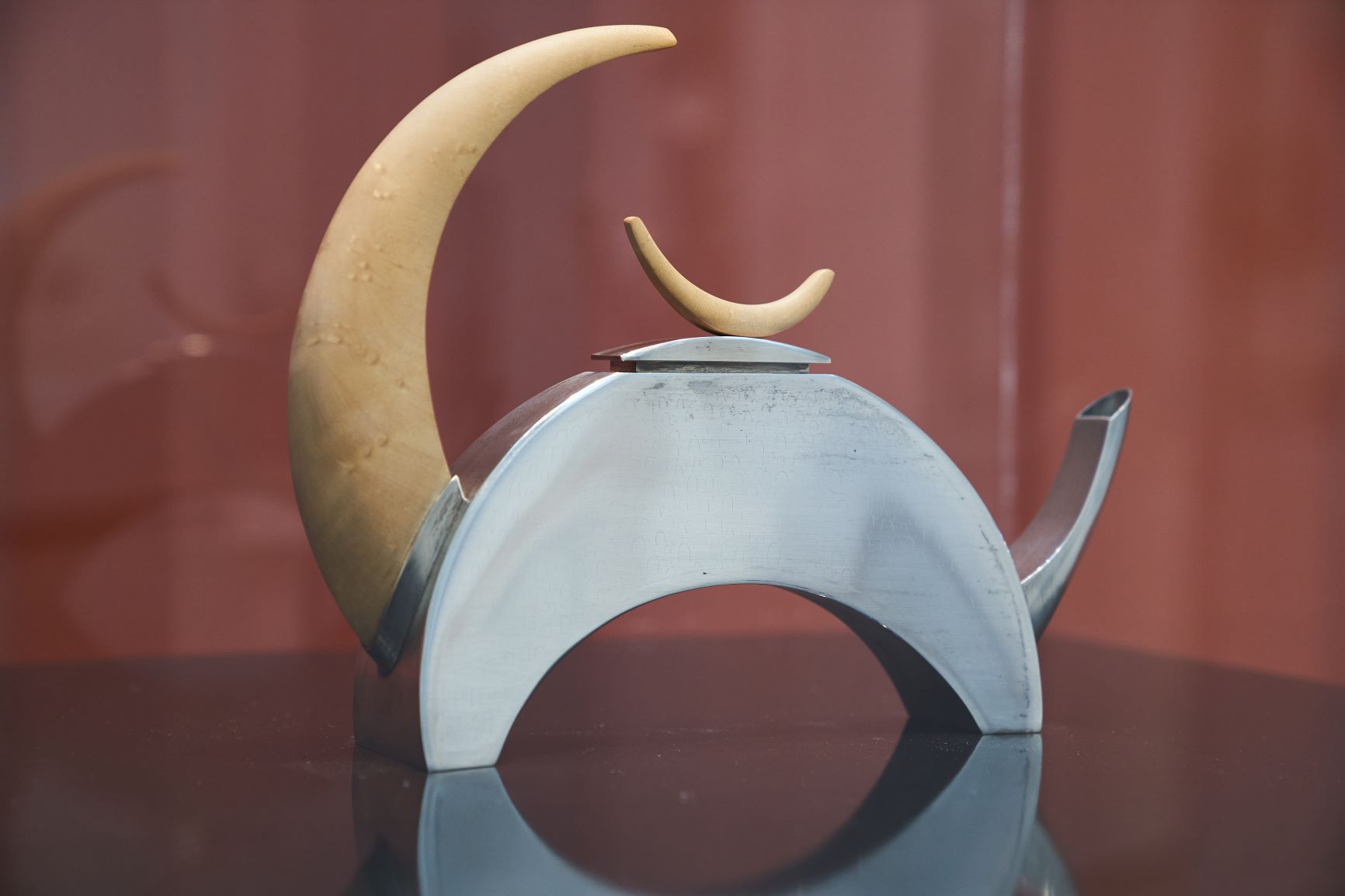INUA is the inaugural exhibition at Qaumajuq, the stunning new Inuit art centre at the Winnipeg Art Gallery. Bringing together more than 90 artists from across Inuit Nunangat and beyond, the exhibition is celebrating and amplifying Inuit voices through their art.
Banner image credit: Donat Anawak. Woman with Lice on Face, c. 1966. Clay. Winnipeg Art Gallery, gift of the Women’s Committee, G-67-29, photo: David Lipnowski
This past March, the Winnipeg Art Gallery (WAG) opened INUA – the inaugural exhibition of Qaumajuq (pronounced KOW-ma-yourq or HOW-ma-yourk), the new Inuit art centre that houses the largest public collection of Inuit art in the world. The exhibition is a milestone event for the museum, the artists, the Inuit community and Canada.
INUA, which means “life force” in many dialects in the Arctic is also an acronym for Inuit Nunangat Ungammuaktut Atautikkut or “Inuit moving forward together,” and reflects the curators’ collective vision for Qaumajuq. The exhibition brings together more than 90 Inuit artists working across the Arctic – including Alaska and Greenland – and the urban south, and highlights the shared histories, practices and knowledge found in Inuit regions. Including over 100 artworks representing a wide range of media – from digital media to installation art to mixed-media, sculpture, paint and photography – the exhibition breaks new ground, challenging common perceptions of Inuit art.
Bridging geographical, generational and cultural gaps
Art and culture have always had a way of bringing people together. And by amplifying the voices of artists from Inuit Nunangat (the homeland of Inuit in Canada), the INUA exhibition is deepening cultural understanding and bridging previously extensive gaps in many ways. Its restorative impact is due in large part to its inclusive curatorial team – Dr. Heather Igloliorte, Asinnajaq, Krista Ulujuk Zawadski and Kablusiak represent all four regions of the Inuit Nunangat: Nunatsiavut, Labrador; Nunavut; Nunavik, Quebec; and Inuvialuit Nunangit Sannaiqtuaq, Northwest Territories.
“Qaumajuq will bring the North to the South to deepen the world’s understanding of Canada,” reads the Winnipeg Art Gallery website. “The North covers over one third of Canada’s landmass, yet fewer than two per cent of Canadians will ever set foot in the North. This will be a place to build and understand our relationships.”
Further, the exhibition spans almost a century of artistic production. The approach of both reaching into the past and celebrating the present helps bridge gaps between emerging and established artists, providing mentorship, training and exposure, and offers new opportunities for Inuit artists everywhere. And, by showcasing young artists alongside more senior and elder artists, the intergenerationality of Indigenous art and culture is honoured. Artists tell the stories of their lives, their lands, their ancestors and their culture – a practice and tradition that has been in place for hundreds of years.
“Together, these artworks celebrate the past, survey the present and speak to an exciting future of Inuit art,” says Dr. Igloliorte.
Shaped in the spirit of reconciliation
All stories within Qaumajuq are told and shared in the spirit of reconciliation. And while there are some who feel the art should be displayed on Inuit land rather than Treaty 1 Territory, the Inuit art centre and INUA exhibition were created with an intention of promoting cultural understanding and therefore an aim of supporting reconciliation. An objective shared and supported by RBC.
“One of the ways we are taking action on reconciliation is working in partnership with Indigenous people to create ways in which Indigenous experiences and perspectives can be shared and understood,” says Dale Sturges, National Managing Director, Indigenous Financial Services. “Our support for Qaumajuq is about placing Inuit art – as an expression of Inuit life and culture – in the centre of Canadian society where it rightfully belongs so the Inuit experience can be honoured, felt and truly included.”
In further support of truth and reconciliation, the Winnipeg Art Gallery actively takes part in national conversations around reconciliation and have developed an artwork provenance policy: If an artwork is found to be acquired in an unethical manner by the WAG or the individual or institution who collected the work previously, they move forward to repatriate the work. In recognition that Treaty 1 Territory is not the original homeland of Inuit art – and that the Spirit of the art must be honoured and cared for – ceremony and prayer take place regularly in all of their vaults for all of their art.
In addition to being a presenting sponsor of INUA, RBC is a major supporter of Qaumajuq and has a long history of acquiring works by Inuit artists – including a decade-long focus on works from Cape Dorset, which was featured in an exhibition at Masterpiece London, 2019. RBC curators actively collect and celebrate works that spark meaningful discussion, engage with reconciliation and support emerging Inuit artists.
“We have and we will continue to work to ensure the RBC Art Collection is representative of diverse perspectives that offer up new ways of looking to our employees and clients. Many of the works by Inuit artists in the collection have fostered reflective conversations on the subject matter and approach put forward by the artists,” says RBC Senior Art Curator Corrie Jackson. “Seeing Inuit artists in the RBC Art Collection celebrated in the Qaumajuq installation is an important celebration of their work.”
A continued learning opportunity for all
INUA can light a new path toward reconciliation by amplifying Indigenous identity and cultures. And it’s important for people across Canada and around the world to share in the journey forward. That’s why WAGxRBC offers virtual sessions throughout 2021, enabling anyone to experience the INUA exhibition. Details can be found at wag.ca/inua.
Diane Amato is a Toronto-based freelance writer who loves to talk about finances, travel and technology.
This article is intended as general information only and is not to be relied upon as constituting legal, financial or other professional advice. A professional advisor should be consulted regarding your specific situation. Information presented is believed to be factual and up-to-date but we do not guarantee its accuracy and it should not be regarded as a complete analysis of the subjects discussed. All expressions of opinion reflect the judgment of the authors as of the date of publication and are subject to change. No endorsement of any third parties or their advice, opinions, information, products or services is expressly given or implied by Royal Bank of Canada or any of its affiliates.





